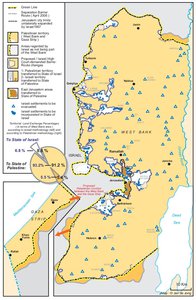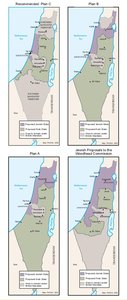THE WOODHEAD COMMISSION PARTITION PROPOSALS, 1938
Map Details
With the Zionists unwilling to accept even 33% of Palestine as sufficient and the Palestinians refusing absolutely to endorse a plan calling for their expulsion and mass ‘transfer’ from that portion, the British were clearly unable to adopt the Peel proposal as it stood. However, the need to resolve the crisis was becoming ever more urgent with the renewal of the Arab Revolt and escalating confrontations. In acknowledgement of the WZO’s August 1937 resolution to accept the principle of partition, though not the Peel boundaries, and to work for its implementation on a more ‘generous’ basis, the British undertook to examine the notion further. Thus, the Technical Commission of Inquiry headed by Sir John Woodhead (and referred to as the Partition, or Woodhead, Commission) was sent to Palestine in April 1938, with the purpose of “ascertaining facts [and]... considering in detail the practical possibilities of a scheme of partition.” Britain attempted to allay Palestinian concerns by declaring they had “not accepted the [Peel] Commission’s proposals for the compulsory transfer...” But Palestinians remained doubtful that the Zionists were prepared to accept a state of any size on a basis of coexistence. Immediately following the Peel Plan, the WZO had formed the “Population Transfer Committee.” Even while the Woodhead Commission was in Palestine the JA Executive held a series of meetings in Jerusalem, discussing in detail the issue of transfer. JA Exec. Chairman, David Ben-Gurion declared his support for “compulsory transfer,” and the Agency noted, “...regarding the transfer of individuals, we are always doing this. But the question will be the transfer of a much greater quantity.” Also coinciding with the Commission’s visit was a series of bombing attacks in Jerusalem, Haifa and Jaffa, carried out by the Zionist Irgun militia, as part of a campaign that would claim nearly 600 Palestinian lives by the end of the year. By the late 1930s, the British army and Zionist militias were all but operating in unison vis-à-vis the Arab Revolt. Special units, dominated by Haganah recruits and headed by British Zionists had earned a grisly reputation for ‘preemptive’ attacks on villages in the Galilee area; their cadre included the future elite of Israel’s armed forces. The Woodhead Commission took as the starting point of its inquiry the Peel Plan (Plan A), but examined at least three partition possibilities in all. The Zionists themselves drew up a plan calling for a large Jewish state while splitting a small Palestinian state into two cantons. While the Palestinian leadership refused to participate officially in the negotiation of what they saw as their own dispossession, Amir Abdullah of Transjordan again sought union with Palestine and submitted his plan for a “United Arab Kingdom.” The Woodhead Commission’s findings amounted to a forceful rejection of the feasibility and equity of any partition. The Commission was bound by its terms of reference to identify territorial concentrations of Jewish demography and so posited, with much reservation, a plan affording what it deemed the “least objectionable” means of creating a Jewish state in Palestine (Plan C), while illustrating by way of another (Plan B) the only viable means of bringing together all the scattered Jewish landholdings of the Galilee. Attaching a “Note of Reservations” to the final report, Commission member Thomas Reid emphatically pointed to the “absence of equity,” “absence of security” and “absence of consent” inherent in adopting any partition plan and concluded that even were Plan C adopted, “it would not and could not be implemented.” In recognition of the rise in Zionist circles of the ‘transfer’ doctrine, his reservations called for “the abandonment of all schemes for carving up the country by artificial boundaries, of plans for its dismemberment and the logical sequel thereto, removal of Arabs from their homes and occupations to make room for Jews.” With the 'principle of partition’ thus dismissed, the British had little choice but to shelve the Peel formula. The government called for a general conference to discuss Jewish immigration and land acquisitions to be convened in London (The London St. James Conference in February 1939) with the participation of Jewish, Palestinian and other Arab representatives.
Related Maps
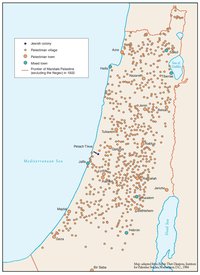
OTTOMAN PALESTINE, 1878
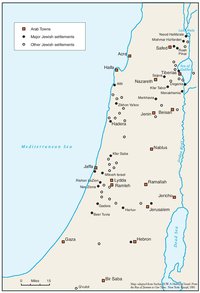
ARAB TOWNS AND JEWISH SETTLEMENTS IN PALESTINE, 1881-1914
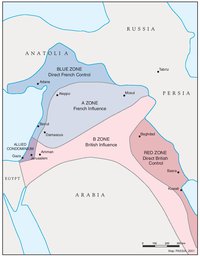
THE SYKES-PICOT AGREEMENT, 1916
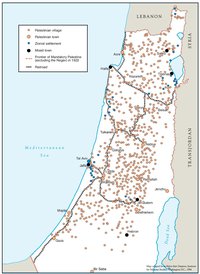
THE BEGINNING OF THE BRITISH MANDATE, 1920
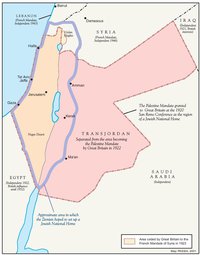
PALESTINE UNDER THE BRITISH MANDATE
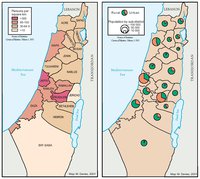
THE DEMOGRAPHY OF PALESTINE, 1931
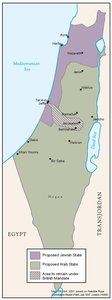
THE PEEL COMMISSION PARTITION PROPOSAL, 1937
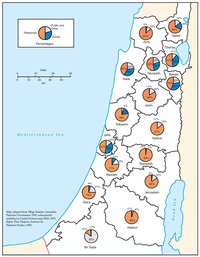
PALESTINIAN AND ZIONIST LANDOWNERSHIP BY SUB-DISTRICT, 1945
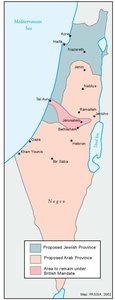
THE MORRISON-GRADY PARTITIONED TRUSTEESHIP PLAN, 1946
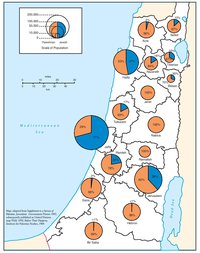
POPULATION OF PALESTINE BY SUB-DISTRICT, 1946
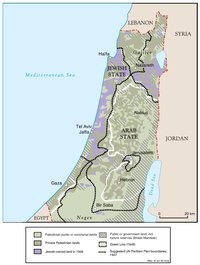
LAND OWNERSHIP IN PALESTINE, 1948

THE UNGA PARTITION PLAN, 1947 – THE 1948 WAR & THE 1949 ARMISTICE LINES
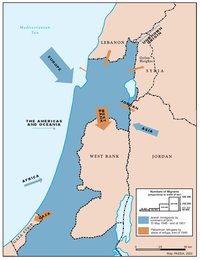
POPULATION MOVEMENTS, 1948-1951
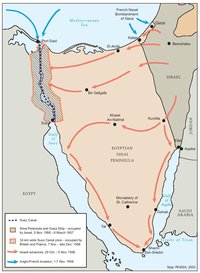
THE SUEZ WAR, 1956
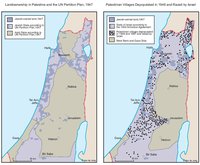
LAND OWNERSHIP IN PALESTINE AND THE UN PARTITION PLAN - PALESTINIAN DEPOPULATED AND DESTROYED VILLAGES, 1948-1949
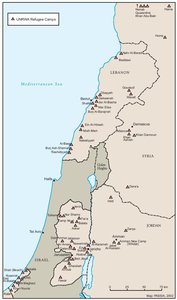
THE PALESTINIAN DIASPORA, 1958
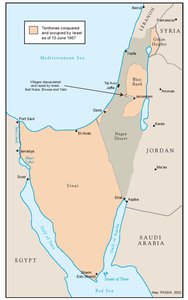
THE NEAR EAST AFTER THE JUNE 1967 WAR
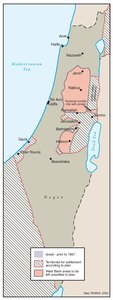
THE ALLON PLAN, JUNE 1967
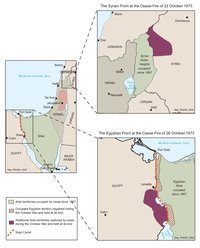
THE OCTOBER WAR, 1973
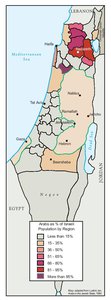
THE PALESTINIANS INSIDE ISRAEL, 1977

THE CAMP DAVID ACCORDS, 1978-1979
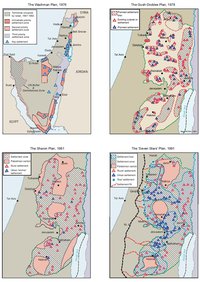
ISRAELI SETTLEMENT MASTER PLANS, 1976-1991
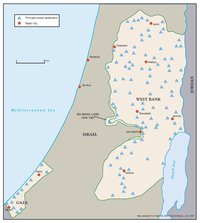
THE 1991 MADRID PEACE CONFERENCE & ISRAELI SETTLEMENTS
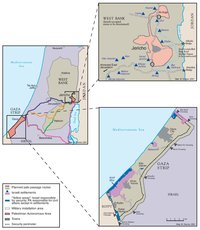
GAZA-JERICHO (OSLO I) AGREEMENT, CAIRO, 4 MAY 1994
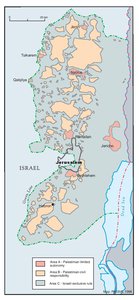
INTERIM (OSLO II) AGREEMENT, TABA, 28 SEPTEMBER 1995
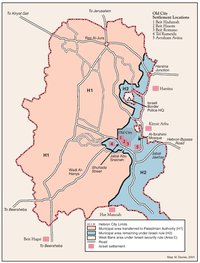
HEBRON PROTOCOL, 15 JANUARY 1997
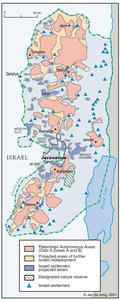
WYE RIVER MEMORANDUM, 23 OCTOBER 1998
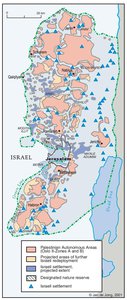
SHARM ESH-SHEIKH AGREEMENT, 4 SEPTEMBER 1999
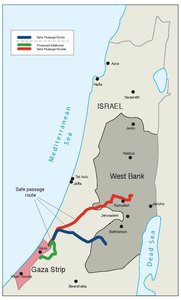
PROTOCOL CONCERNING SAFE PASSAGE BETWEEN THE WEST BANK AND THE GAZA STRIP, 5 OCTOBER 1999

GAZA, 2000
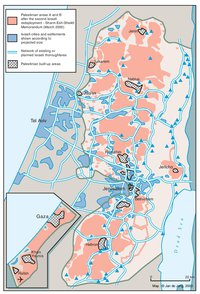
WEST BANK AND GAZA STRIP, MARCH 2000
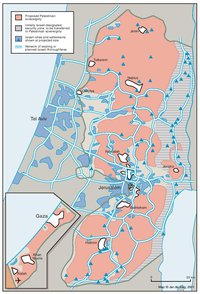
CAMP DAVID PROJECTION, JULY 2000
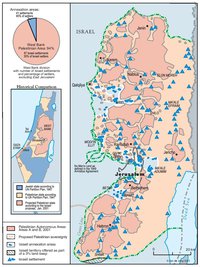
TABA TALKS PROJECTION, JANUARY 2001
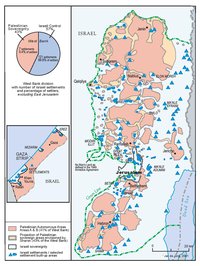
THE SHARON PROPOSAL, SPRING 2001
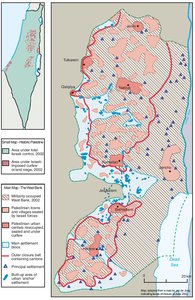
THE REINVASION OF THE PALESTINIAN TERRITORIES, 2001-2002
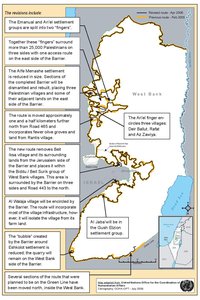
THE ROAD MAP, 2003
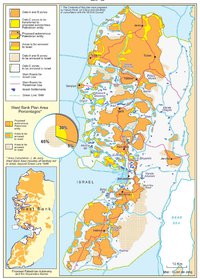
THE GENEVA INITIATIVE AND ACCORD, 2003
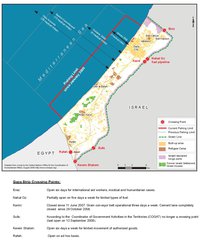
THE ISRAELI DISENGAGEMENT PLAN, 2003-2005
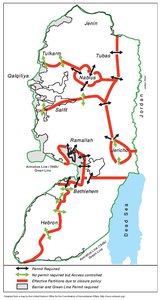
AGREED DOCUMENTS ON MOVEMENT AND ACCESS FROM AND TO GAZA, 2005
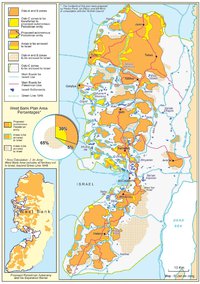
THE SETTLERS' PLAN FOR PALESTINIAN AUTONOMY, 2006
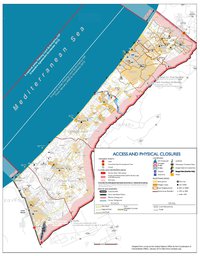
THE GAZA STRIP TODAY (2014)
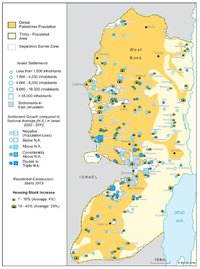
THE WEST BANK TODAY (2014)
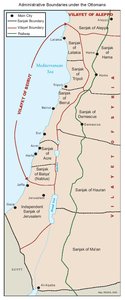
ADMINISTRATIVE BOUNDARIES
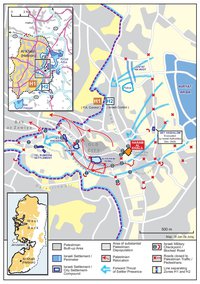
HEBRON
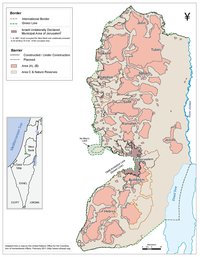
Area C
